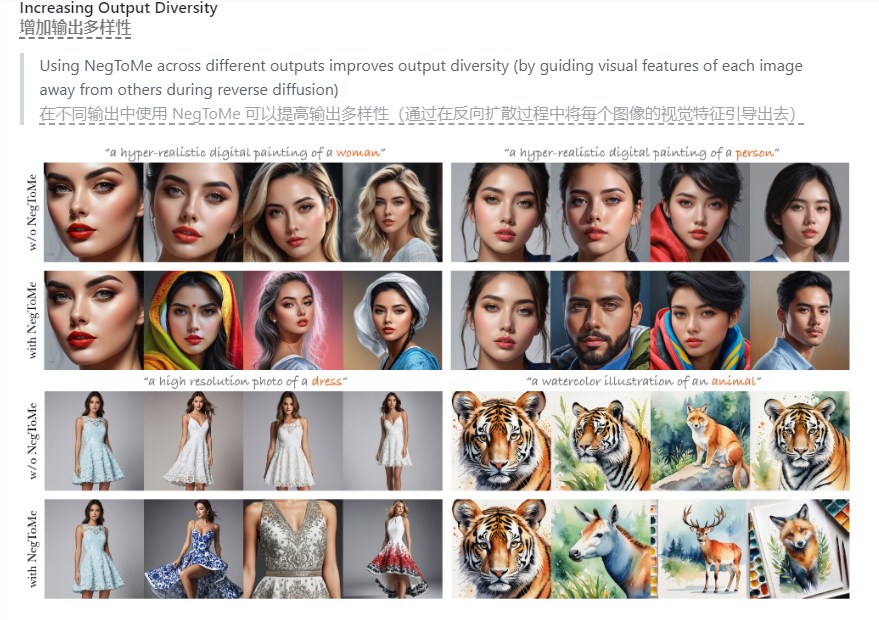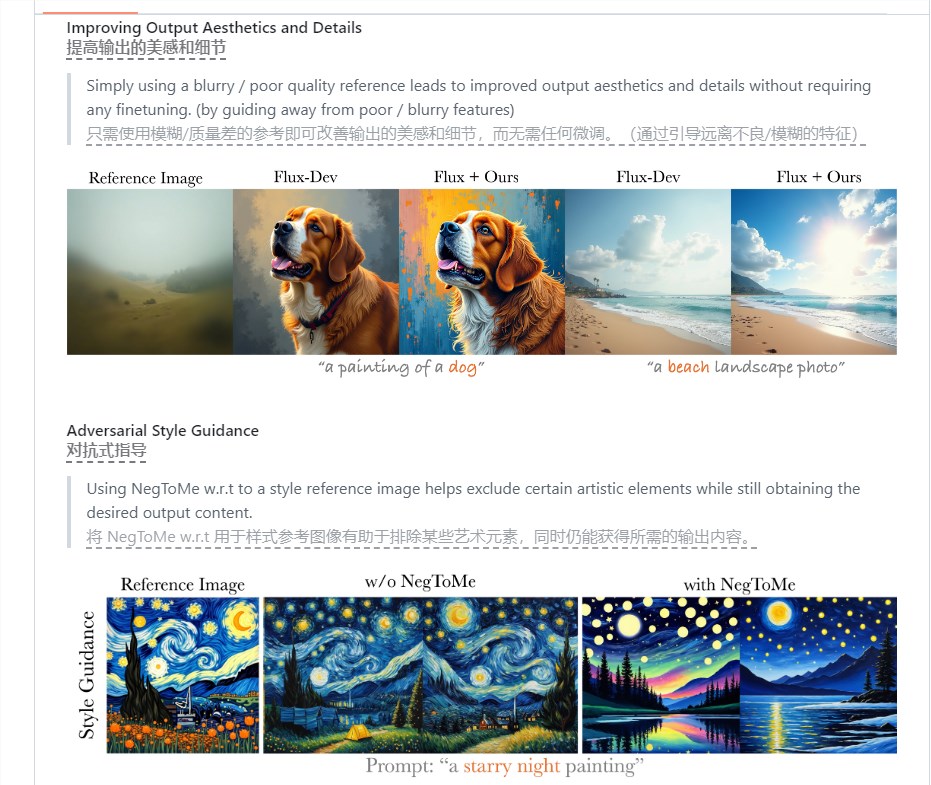Generative imaging technology is advancing rapidly, and creators' demands for image quality, diversity, and copyright protection are growing. NegToMe emerged as the times require. It adopts an image-driven adversarial guidance method, breaks through the limitations of traditional negative prompts, and brings revolutionary changes to the field of image generation. This technology not only significantly improves the diversity of image generation, especially in the processing of race, gender and visual characteristics, but also effectively reduces the similarity between generated content and copyrighted works, making significant progress in copyright protection. . More importantly, NegToMe is easy to integrate, has strong compatibility, and almost no increase in inference time, providing great convenience to the majority of creators.
With the rapid development of generative image technology, creators have increasing demands for image output diversity, copyright protection, and visual effects. Against this background, NegToMe emerged, bringing disruptive innovation to the field of image generation.
This breakthrough technology completely breaks through the limitations of traditional negative cues through an image-driven confrontational guidance method. Different from text-based adversarial guidance methods, NegToMe directly refers to the visual features of images to achieve precise and flexible image generation control.

The core advantages of technology are reflected in multiple dimensions. In terms of diversity, NegToMe significantly improves the diversity of generated images, especially in the processing of race, gender, and visual features. More importantly, it expands creative space without sacrificing image quality.
Copyright protection is a major pain point in generative imaging technology. NegToMe cleverly reduces the similarity between generated content and copyrighted works by adversarially guiding visual features in copyright retrieval databases. Test data shows that using this technology can reduce the visual similarity of copyrighted content by 34.57%.

Impressively, NegToMe's integration is extremely easy. Developers only need to add a small amount of code to apply it to existing generative models, with virtually no impact on inference time, typically less than a 4% increase. Its strong cross-platform compatibility enables flexible application in different diffusion models.

In addition to basic image generation, NegToMe also performs well in cross-domain applications. From turning sketches into photo-realistic photos to excluding specific elements in artistic style generation, it gives creators unprecedented creative freedom.
Looking to the future, NegToMe will undoubtedly become a key tool in the field of image generation. By increasing diversity, enhancing copyright protection, and improving image aesthetics, it opens up a broader space for creators to imagine. As technology continues to iterate, NegToMe is redefining the possibilities for image generation.
Address: https://github.com/1jsingh/negtome
All in all, NegToMe brings new possibilities to the field of image generation with its innovative technology and ease of use, providing creators with more powerful tools and a broader creative space. It is worth looking forward to its future development and application.